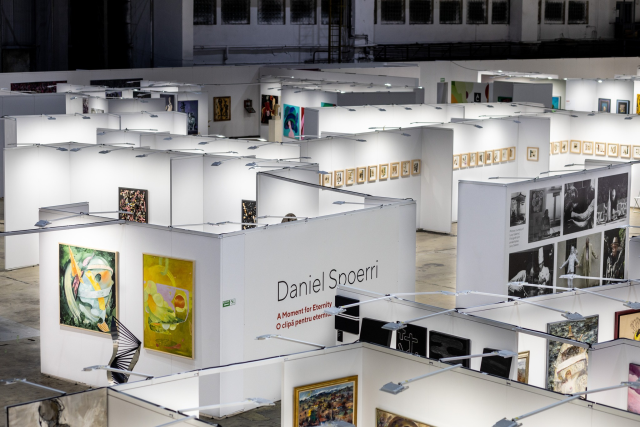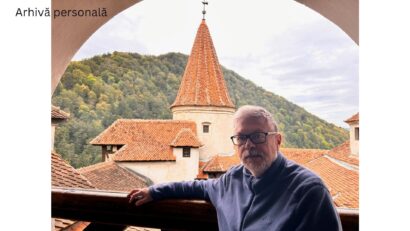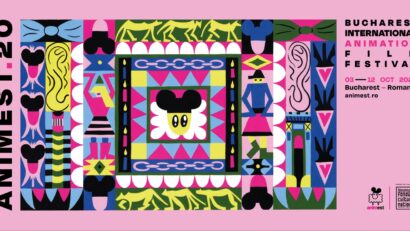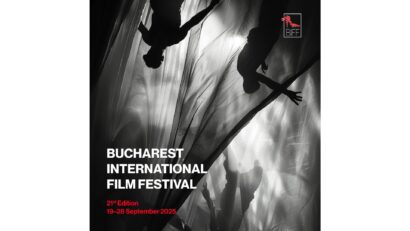MoBU Art Fair
Romaero hosted the first edition of the International Art Fair Bucharest - MoBU

Eugen Cojocariu, 24.06.2023, 12:32
In late May, in Bucharest, an aeronautical hangar at Romaero was home to the first edition of the “International Art Fair Bucharest – MoBU”. More than 30 art galleries and around 200 visual artists participated. The fair hosted lots of events, presentations, workshops, performances and screenings. We talked about the fair with its director, Demetra Arapu:
“There are more than 200 artists, 30 galleries, artist-run spaces that add over this figure of 30 stands, some of them by independent artists. We also have a corner called “Take off”, an exhibition that we organized especially for this first edition. “Take off” because we are in an aircraft hangar. The idea came up some time ago and weve worked hard for a year. There are many things to do, and the space is very large, so, as you can imagine, its been hard work. We wanted from the beginning to use an industrial hall, to have height, natural light and freedom of movement, to be able to accommodate a lot of contemporary art, because thats what its all about. We set out from the very beginning to also include a program of conferences and workshops, so we needed a big space for all this. And Romaero was the perfect place. Its a space where concerts and parties have been organized before, that is, its attractive and you can populate it in many ways.
Director Demetra Arapu also told us how the public received this new art fair, how it was organized and if collectors were interested:
“It was received the way I wanted, I got involved and we got involved personally. This is the result we wanted and we have had positive reactions both from the public and from the gallerists with whom we have become friends and with whom I consider that we have created a solid structure and a wonderful collaboration. There were no incidents, no animosities. In principle, things went well, things from the point of view of personal collaboration and between the galleries and between all those involved in organizing such an event. We had important conferences and guests, such as the French writer Pascal Bruckner. As regards the existence of collectors market or a solid platform, theres a lot to talk about here. My opinion is that there is purchasing power, there is an appetite for contemporary art. Now, in terms of numbers, I dont know what to say. There are people who want to buy, for personal reasons, for a gift or for an investment. I got all kinds of questions. The important thing is to start somewhere. The idea is that this is an opportunity to see contemporary art in many ways, in many environments, the artists were here, most of them, you met them at the stands and talked to them. Its exceptional, its also a networking platform. Weve seen, sure, collectors we all know, but were not going to make a list right now, here at our place, and that makes me happy.”
One of the most attractive events of the fair was represented by the retrospective exhibition of the famous nonagenarian Swiss artist and writer, born in Romania, Daniel Spoerri. The artist is the inventor of the “Eat Art” movement and was one of the initiators of “Nouveau Réalisme”, an artistic movement through which objects from everyday reality are transposed into art. Demetra Arapu gave us some details about the famous artists participation in MoBU:
“The collaboration with Daniel Spoerri, in this case with his lifelong gallerist named Thomas Levy, owner of the Galerie Levy in Hamburg, has worked organically, as it usually works. We took the right and trodden path. We just called, invited him, as he is a Romanian-born artist who is not very well-known here. We brought 120 works from the most important series he created, such as the “Sevilla” “Black Series”. He was flattered. For the opening, he also sent us a greeting and encouragement video in which he expresses his joy and honor to be part of this.”
Art critic and historian Pavel Şușară also told us about the Daniel Spoerri retrospective:
“He was born in Galați. He left when he was a child. He was 10 years old when he left Romania. He was born into a Jewish family and his family emigrated. He initiated one of the most important movements and attitudes related to a harsh reality, an immediate reality, somehow stopping the common moments, the everyday moments in the life of man and in the life of the collective. In snapshots that somehow became long-term witnesses to human nature, but in its ordinary, not exceptional moments. And his ability to capture this reality through cutouts, to establish another reality, through collages of objects and by changing the connection between elements, by changing the syntax, also creates a new artistic morphology, creates absolutely surprising images and absolutely surprising objects.” (MI)






























